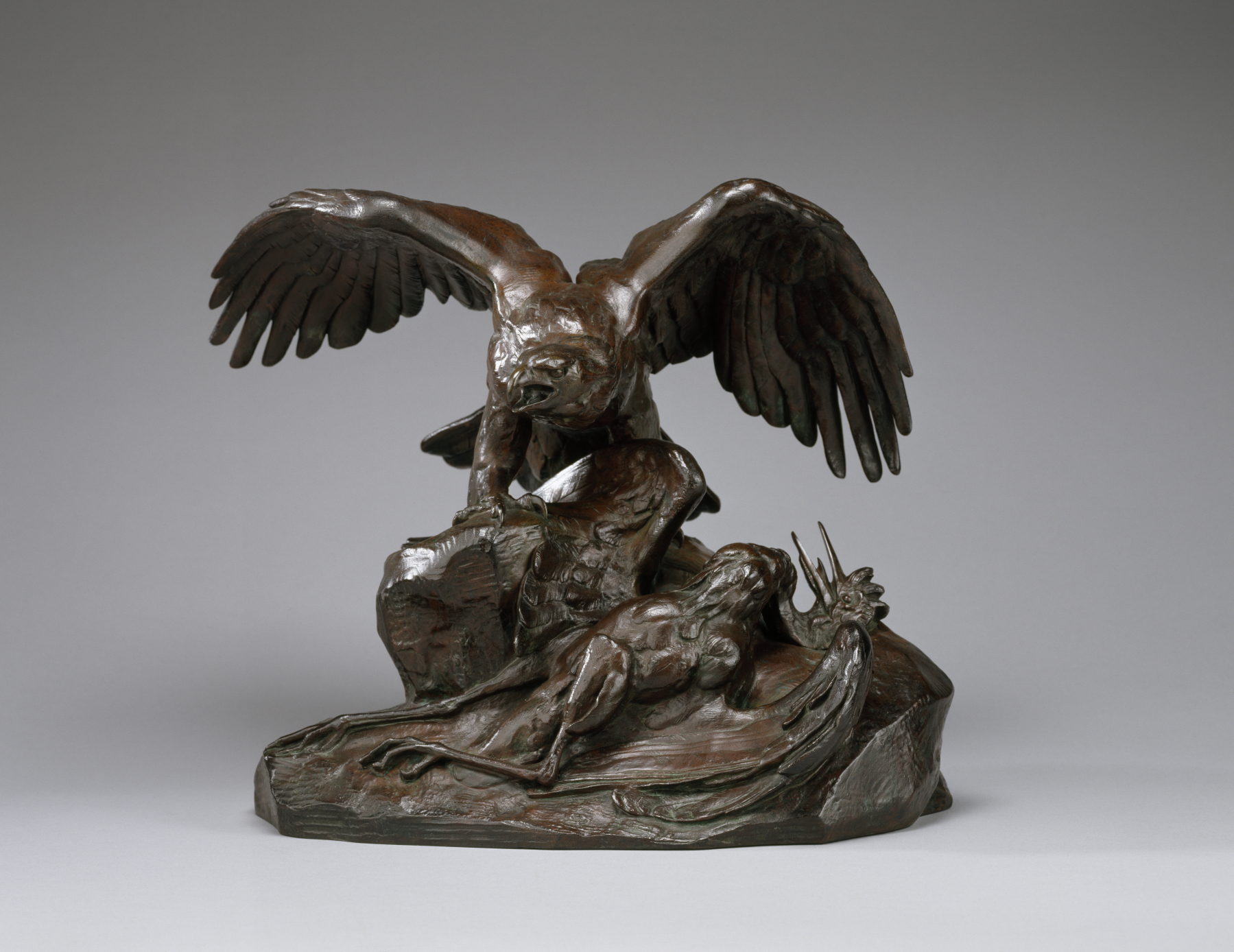Eagle Holding a Heron (first version)
(18th and 19th Centuries )
An eagle, with its beak opened as though it is screeching, has landed on a rock and leans over the lifeless body of a heron. This composition is one of several that trace their origin to a project that the French government conceived in 1834: to place on top of the Arc de Triomphe a gigantic statue of an eagle with a wingspan of over 75 feet. In its talons, the eagle was intended to grasp various trophies of war. For fear of offending past enemies, the government eventually canceled the project. Barye, however, reused the figure of the eagle with the outstretched wings in some of his compositions, including this example.
Inscription
Provenance
Provenance (from the French provenir, 'to come from/forth') is the chronology of the ownership, custody, or location of a historical object. Learn more about provenance at the Walters.
William T. Walters, Baltimore, prior to 1889 [mode of acquisition unknown]; Henry Walters, Baltimore, 1894, by inheritance; Walters Art Museum, 1931, by bequest.
Exhibitions
| 2007-2008 | Untamed: The Art of Antoine-Louis Barye. The Walters Art Museum, Baltimore; Philbrook Museum of Art, Tulsa; The Henry Morrison Flagler Museum, Palm Beach. |
| 1889-1890 | The Works of Antoine-Louis Barye. American Art Gallery (New York), New York. |
Geographies
France, Paris (Place of Origin)
Measurements
H: 11 1/4 x W: 14 1/4 x D: 10 5/8 in. (28.6 x 36.2 x 27 cm)
Credit Line
Acquired by William T. Walters, before 1889
Location in Museum
Not on view
Accession Number
In libraries, galleries, museums, and archives, an accession number is a unique identifier assigned to each object in the collection.
In libraries, galleries, museums, and archives, an accession number is a unique identifier assigned to each object in the collection.
27.146


